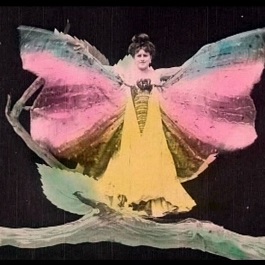A special program by Carlo Montanaro
 With its appearance, cinema, as well as being amazing and entertaining, has always preserved its essence of “scientific discovery”, of materialization of a dream that sees immediately involved researchers and inventors. A cinema that serves to document and disseminate. And even more! Even researches that anticipate the same set-up of the system, have the incredible succeeding, for example, to prove the impossible, as for example the ability of cats to always fall on all fours (as demonstrated by the great physiologist Jules Etienne Marey). Then filming at high speed with the bullets that “pierce” the soap bubbles. And those that even joyfully witness the growth of the flowers. Not to mention the destruction of a huge building that not only happens in a matter of seconds but, at least virtually, with the same speed seems to rebuild itself … SCIENCE, in short, asks to cinema to explain and to document its hypotheses, arriving to make them spectacular, involving in the pre-television era spectators willing to pay a ticket to assist not to fiction but to the unveiled reality.
With its appearance, cinema, as well as being amazing and entertaining, has always preserved its essence of “scientific discovery”, of materialization of a dream that sees immediately involved researchers and inventors. A cinema that serves to document and disseminate. And even more! Even researches that anticipate the same set-up of the system, have the incredible succeeding, for example, to prove the impossible, as for example the ability of cats to always fall on all fours (as demonstrated by the great physiologist Jules Etienne Marey). Then filming at high speed with the bullets that “pierce” the soap bubbles. And those that even joyfully witness the growth of the flowers. Not to mention the destruction of a huge building that not only happens in a matter of seconds but, at least virtually, with the same speed seems to rebuild itself … SCIENCE, in short, asks to cinema to explain and to document its hypotheses, arriving to make them spectacular, involving in the pre-television era spectators willing to pay a ticket to assist not to fiction but to the unveiled reality.
Blood circulation in a capillary (1891) – Etienne Jules Marey was a French physiologist and inventor. He is considered a pioneer in film-making and invented devices to capture the moving image. He produced many studies about cardiovascular hemodynamic, one of whom was his graduation thesis of 1859.
Free-falling cat (1891) – Etienne Jules Marey invented the so-called “photographic gun” and other devices that permitted to fix with a series of still images, subsequent phases of a movement (at first on a single photographic negative and then on moving celluloid bands). This technique is known as “chronophotography”.
Bullet through a soap bubble (1904) – Lucien Bull was one of Marey’s assistants and was specialized in micro-cinematography and high-speed cinematography. A very well known example is the 1500-images-sequence that shows a bubble being hit by a bullet.
X-Rays (1897) – John Macintyre was a Scottish doctor and was the first to employ X-rays (discovered in 1895 by William Röntgen) in film for the first time in 1897.
Une indigestion (1902) by Georges Melies could be defined as the first grotesque splatter movie. A man suffering from abdominal pains goes to the doctor (played by Melies himself), who suggests a surgery. The patient accepts but things don’t go as expected.
Demolition if the Star Theatre (1901) – time-lapse short movie about the demolition of a New York theater, brick after brick, produced by American Mutoscope and Biograph Company.
The life of butterflies (1911) is a documentary by Roberto Omegna in collaboration with the famous poet Guido Gozzano that shows the circle of life of butterflies, produced by Ambrosio Film. It won the first prize in the scientific category at the “International Competition of Cinematography” that took place in Turin in 1911.
Metamorphosis of a Butterfly (1905) – Gaston Velle, French director and magician, worked for the Lumiere brothers and then also for Pathé in the 1910s taking care of scenography and special effects in their silent movies.
Partial eclipse of the sun (1912) – Director and producer Luca Comerio was a pioneer open to any experimentation in the scientific documentary field. He documented the solar eclipse that took place on the 17th april 1912 by adapting the telescope of the Brera’s Observatory.
The birth of a flower (1910) by Percy Smith. It shows different kinds of flowers that open their petals thanks to the time-lapse technique.
Soap bubble (1937) – Roberto Omegna, Italian pioneer in the scientific cinema, pursued his career during the fascist dictatorship at the Istituto Luce.
Cristaux Liquids (1978) by Jean Painleve. Microscope study about the transitions of liquid crystals.
